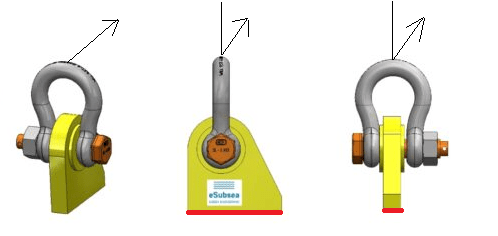muruep00
Civil/Environmental
- Oct 16, 2023
- 26
I am calculating a padeye with a shackle, in which the force coming from a cable is deviated a certain angle in the both represented views (vertical and horizontal deviation), due to cable misalignment.

Does the fixed surface in red have a torsion moment?. I can easily find a tension force and two bending moments, but I don't know if a torsor moment is also present.

Does the fixed surface in red have a torsion moment?. I can easily find a tension force and two bending moments, but I don't know if a torsor moment is also present.
